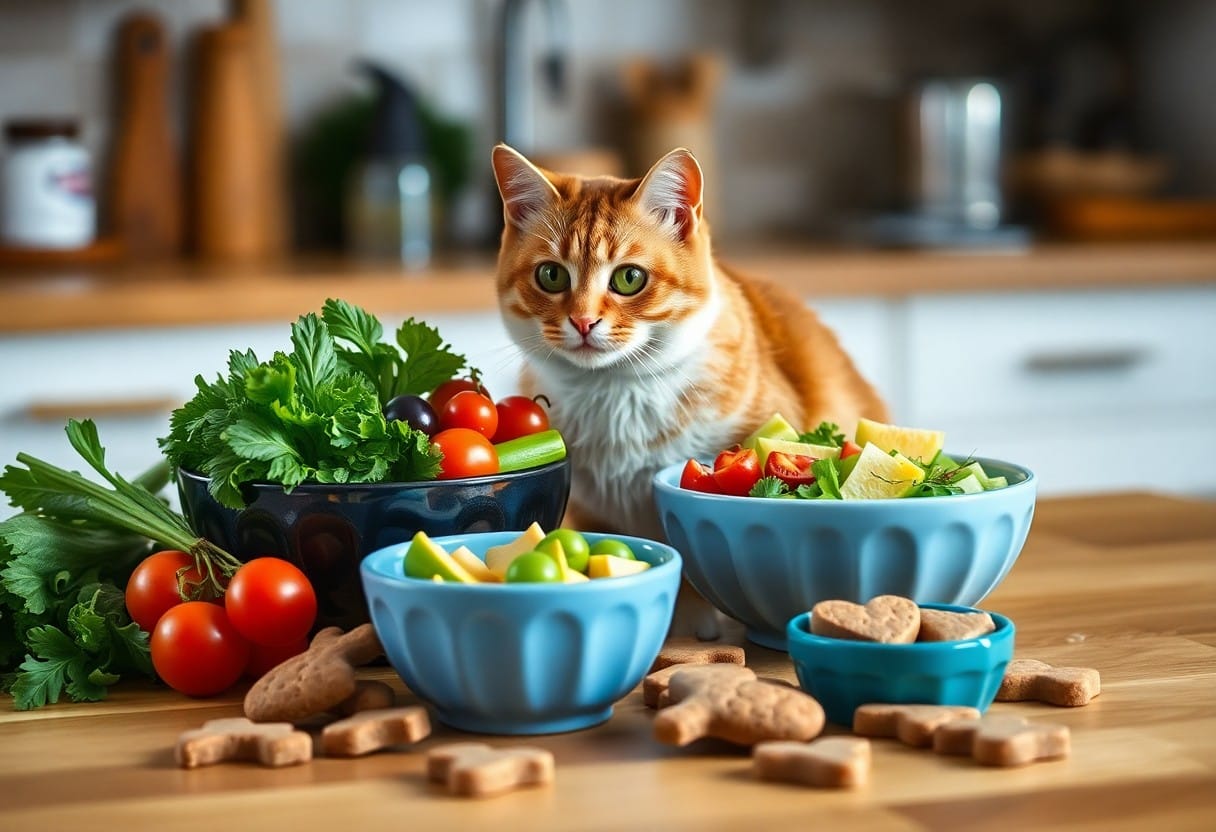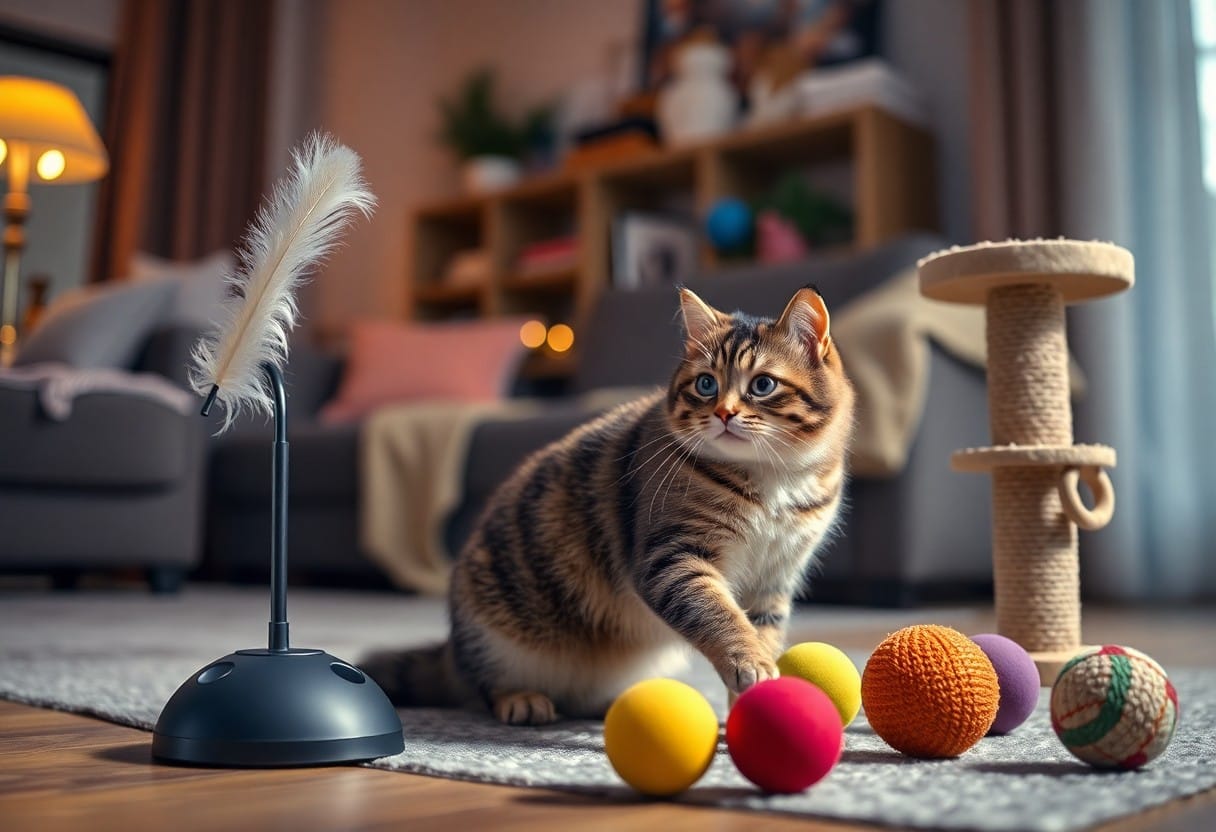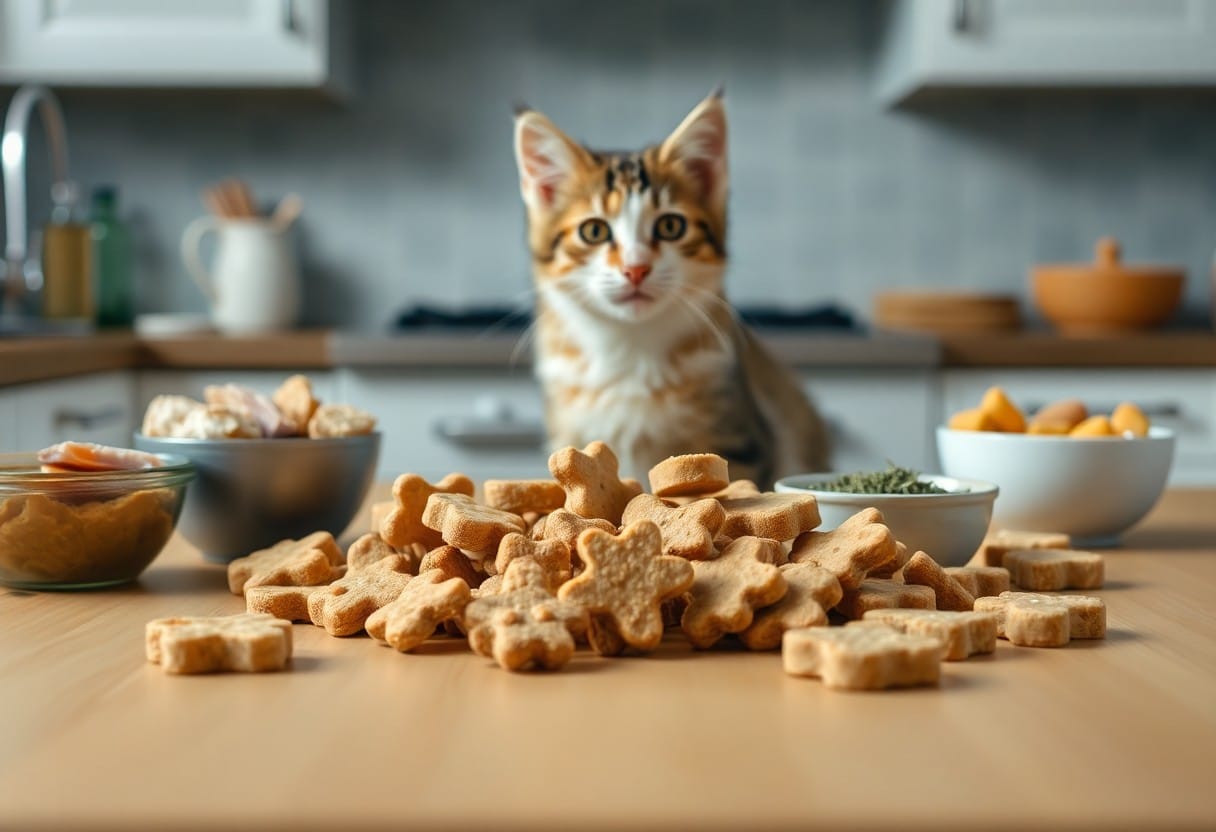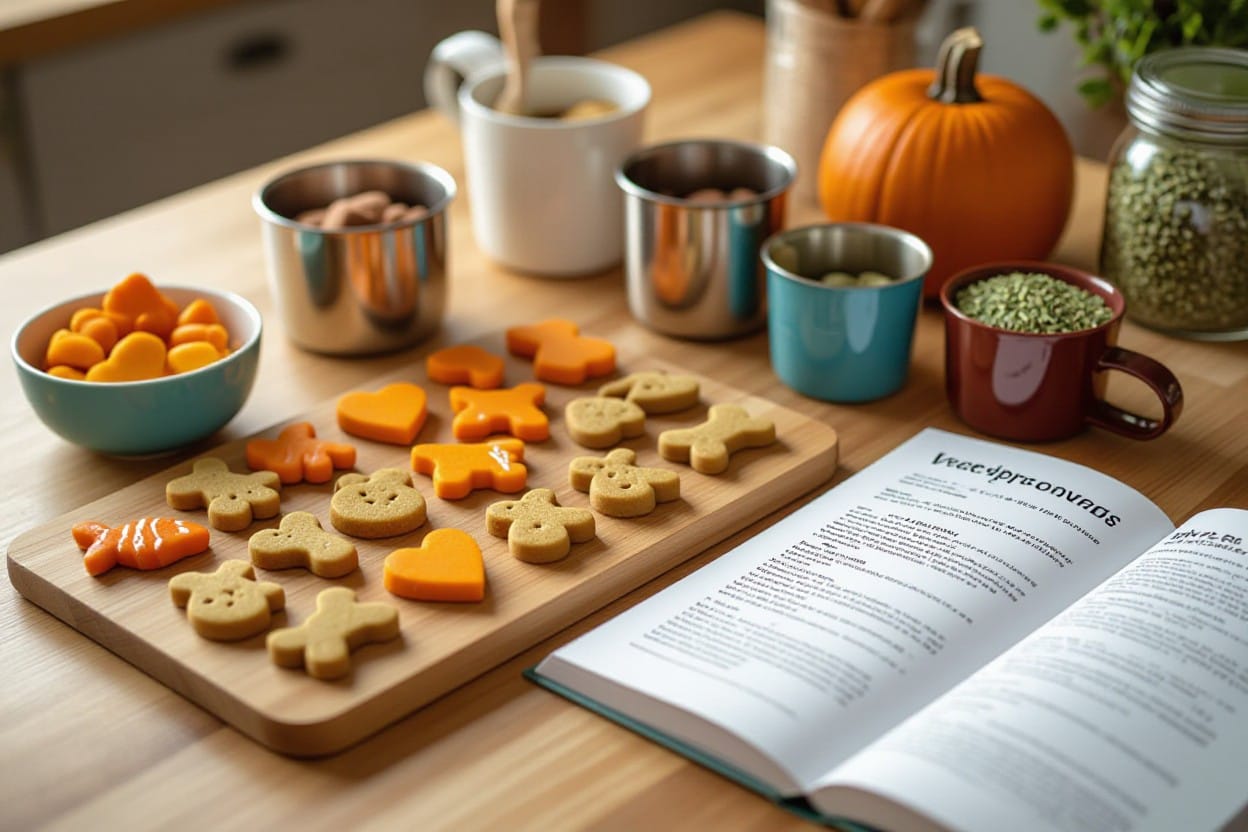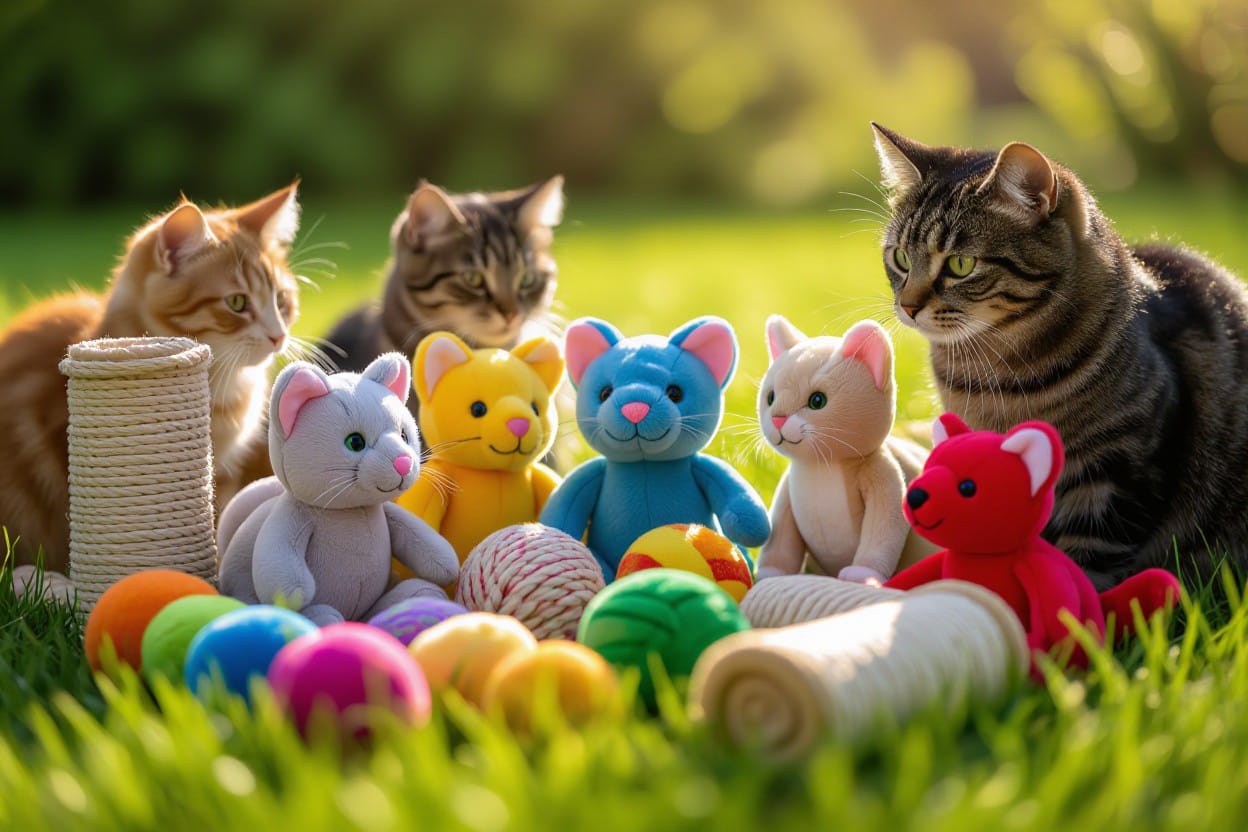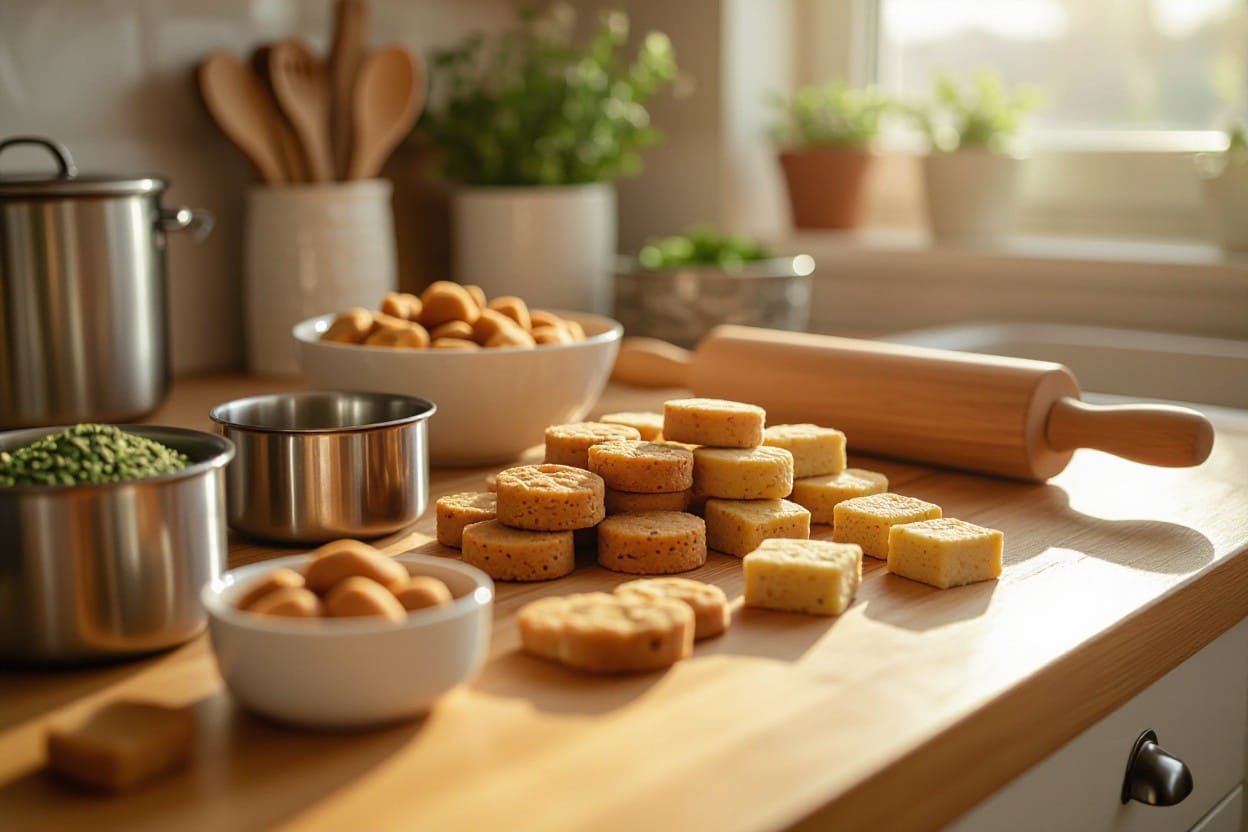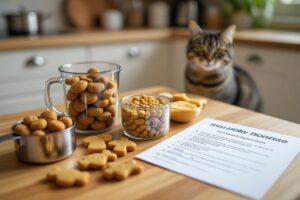Pets deserve the best, and making homemade treats is not only a fun way to bond with your furry friend, but it also allows you to control the ingredients. By using safe, wholesome foods, you can avoid harmful additives often found in store-bought options. In this guide, you will learn how to whip up simple yet nutritious treats that your pet will love. So, roll up your sleeves and get ready to unleash your culinary skills in the kitchen for your beloved cat!
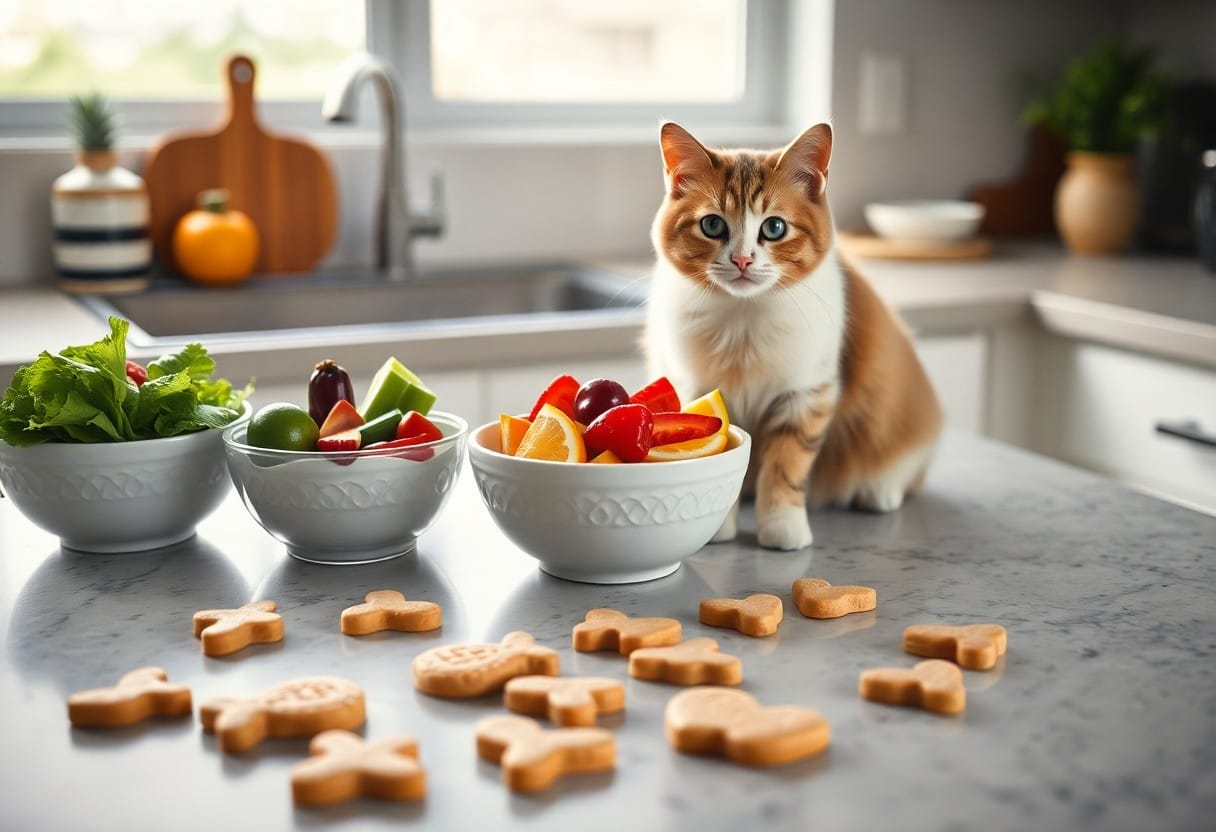
Key Takeaways:
- Homemade pet treats can be tailored to meet specific dietary needs and preferences of your pet, ensuring they are safe and healthy.
- Using natural ingredients found in your kitchen allows for better control over what your pet consumes, reducing the risk of allergens and harmful additives.
- Simple recipes and preparation methods make it easy for any pet owner to get started with creating wholesome snacks for their furry friends.
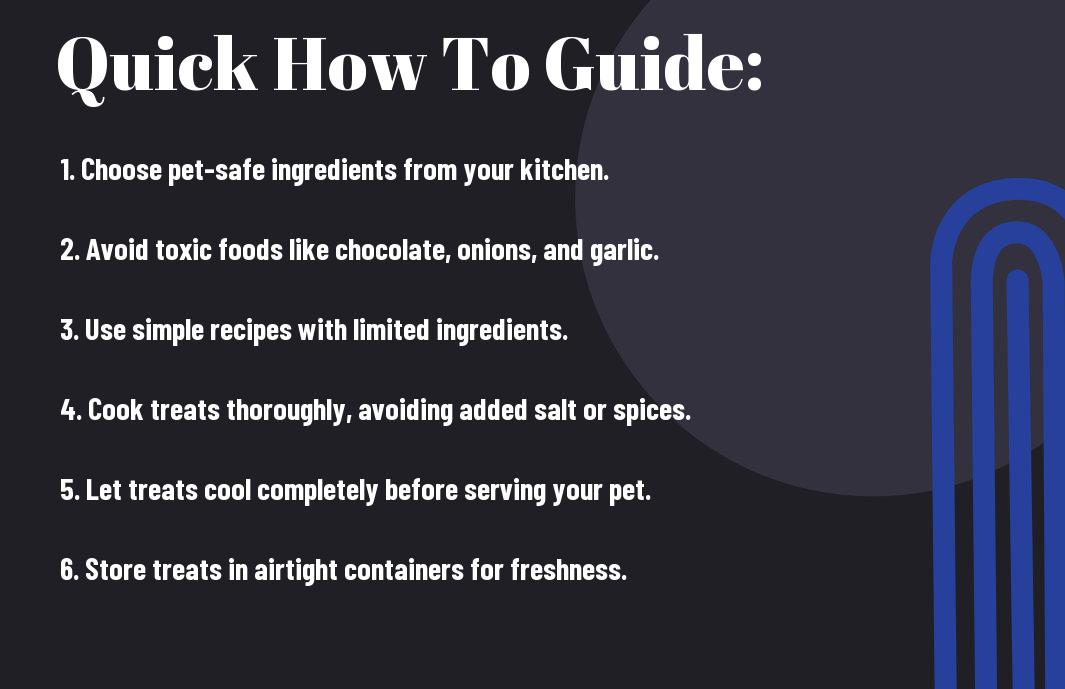
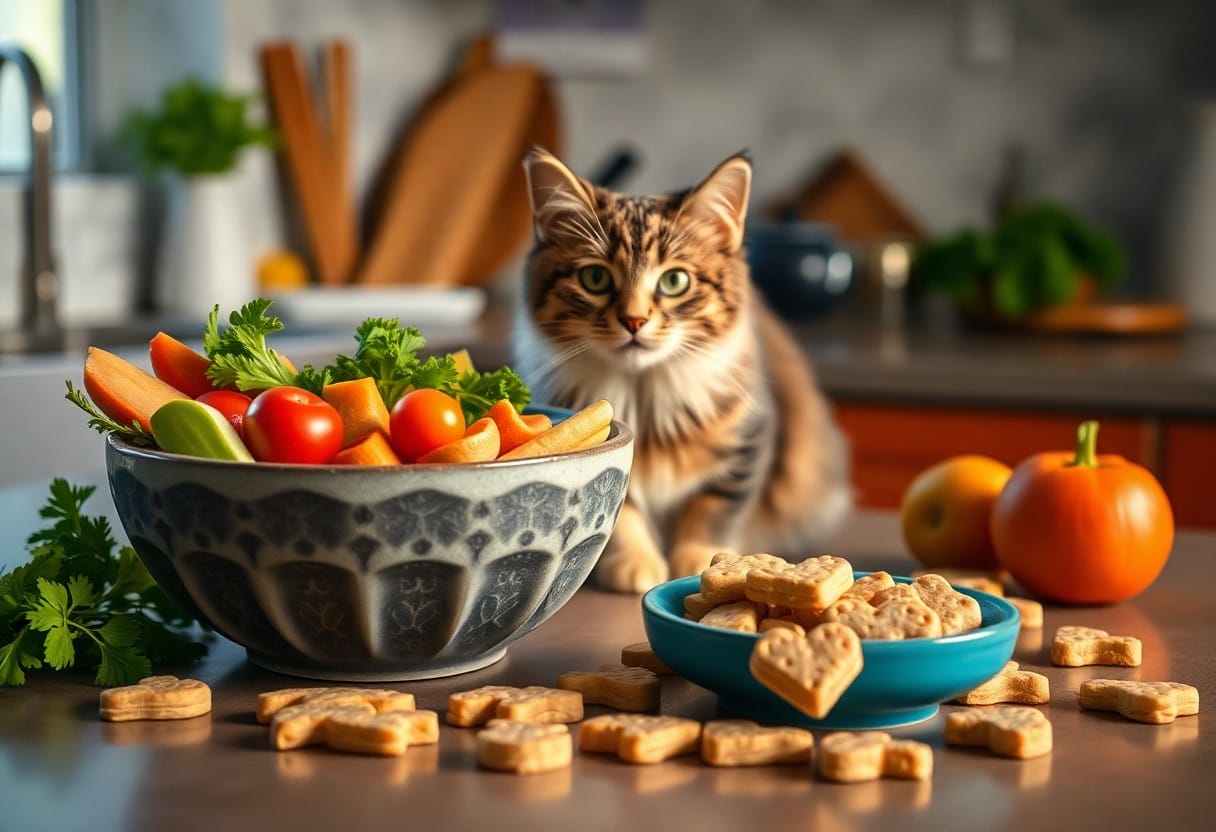
Understanding Your Pet’s Dietary Needs
For you to make treats that are not only delicious but also safe for your pet, it’s necessary to understand your pet’s specific dietary needs. Each animal varies in its nutritional requirements based on factors like age, weight, and health status. Researching your pet’s ideal diet can help you prevent any nutritional deficiencies and ensure their overall wellbeing. Always consult your veterinarian if you’re unsure, as they can provide tailored advice to meet your pet’s needs.
How to Identify Safe Ingredients
Now that you know the dietary requirements for your pet, the next step is to identify safe ingredients for making homemade treats. Stick to whole foods like fruits, vegetables, and lean proteins, avoiding known toxic ingredients such as chocolate, onions, and grapes. You can consult reliable resources or talk to your vet for guidance on what foods are safe. Doing your homework ensures your handmade treats are healthful and safe for your furry friend.
Tips for Allergies and Sensitivities
The key to safe homemade treats is to be mindful of any potential allergies and sensitivities your pet may have. Here are some tips to help you navigate this area:
- Identify any known food allergies your pet may have.
- Start with small quantities of new ingredients.
- Monitor your pet for adverse reactions after trying new treats.
- Consider consulting your vet about specific ingredients.
Any unexpected reactions should be taken seriously and addressed promptly.
This understanding allows you to create delicious treats while avoiding any harmful ingredients. Consider these additional tips:
- Always read labels on store-bought ingredients for hidden allergens.
- Ditch common allergens like wheat and dairy if your pet has shown sensitivity.
- Include single-ingredient treats to easily monitor your pet’s reactions.
- Think of using healthy substitutes like pumpkin for flour.
Any significant changes in your pet’s behavior or health should be discussed with your veterinarian.
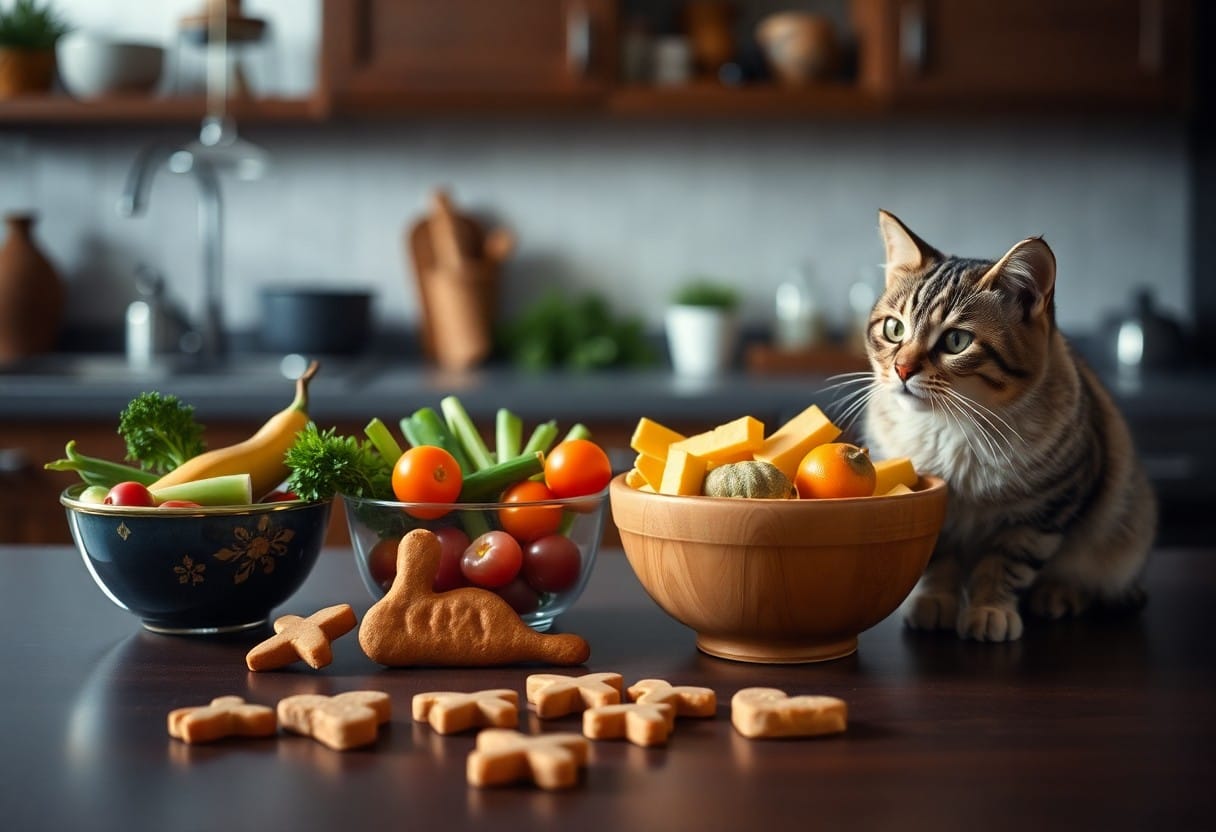
Essential Kitchen Tools for Treat Making
It’s important to have the right tools when making safe homemade treats for your pet. With the right equipment, you can create delicious snacks that your furry friend will love. Invest in quality utensils that will make your preparation efficient, ensuring a smoother process from start to finish.
Key Utensils and Equipment
While you can use many items from your kitchen, there are a few necessary tools that will make treat-making easier and more effective. Having the right utensils can enhance your experience and ensure safety:
- Mixing bowls for combining ingredients.
- Measuring cups for accurate portioning.
- Cookie sheets for baking treats evenly.
- Silicone mats or parchment paper to prevent sticking.
Any of these tools will help you create safe and tasty treats for your beloved pet.
Tips for Safe Food Handling
Food safety is paramount when preparing treats for your furry companions. Always ensure that ingredients are fresh and free from any harmful additives. Here are some key tips to consider:
- Wash your hands thoroughly before and after handling food.
- Keep surfaces clean and sanitized to prevent contamination.
- Store ingredients properly to avoid spoilage.
- Use separate utensils for pet treats to avoid cross-contamination with human food.
Any lapse in safe food handling can affect the health of your pet.
Kitchen hygiene is vital when creating homemade treats for your pet. To maintain a safe cooking environment, follow these food handling guidelines:
- Keep raw ingredients separate from cooked items.
- Use clean equipment every time you switch tasks.
- Check expiration dates of all ingredients.
- Label and date any stored treats to ensure freshness.
Any attention to these practices will help ensure you are creating safe and healthy treats for your furry friend.
Basic Homemade Treat Recipes
All pet owners know the joy of treating their furry friends. By preparing homemade treats, you ensure your pets enjoy delicious snacks while avoiding harmful additives. In this section, you’ll find simple recipes that cater to your cat or dog, making snack time not only tasty but also safe. Crafting these treats can be a fun, satisfying experience for both you and your pet!
How to Make Simple Treats
To create simple treats, combine easy ingredients you likely already have at home. Start with a base like whole wheat flour or oats, then add flavors such as peanut butter or pumpkin. Roll the mixture into small balls or cut them into fun shapes, before baking at a low temperature. Your pets will absolutely love these tasty creations!
Tips for Flavor Variations
With a dash of creativity, you can experiment with various flavors to keep your pets excited about treat time. Here are some tips to create flavor variations:
- Incorporate fruit purees like banana or apple for a sweet twist.
- Mix in protein sources such as cooked chicken or fish for extra nutrition.
- Add herbs like catnip, mint, or parsley to entice your pets.
After finding the right combinations, your pets will be eager to try every new treat!
Make sure to balance flavors while keeping your pet’s specific dietary needs in mind. You can always adjust recipes based on what your furry friend enjoys the most. Keep an eye out for any signs of allergies or sensitivities to new ingredients. Here are some additional flavor ideas you might find helpful:
- Use carrots or sweet potato for a natural sweetness.
- Incorporate broth (low sodium) for a savory treat.
- For a crunchy texture, try adding seeds like flaxseed or chia seeds.
After exploring these variations, you’ll be thrilled to see the excitement on your pet’s face with each delicious bite!
Advanced Treat Recipes
To elevate your pet treat-making game, explore advanced recipes that will delight your furry friend while keeping them healthy. Here’s a breakdown of some complex yet rewarding treat options you can try:
| Recipe | Main Ingredients |
|---|---|
| Peanut Butter and Pumpkin Biscuits | Whole wheat flour, pumpkin puree, peanut butter |
| Salmon and Sweet Potato Bites | Canned salmon, sweet potato, oat flour |
| Chicken and Rice Treats | Cooked chicken, brown rice, eggs |
Gourmet Treat Ideas
There’s a world of gourmet treats you can create to pamper your pet! Think about using ingredients like organic chicken liver, fresh herbs, or even goat cheese. These flavors are not only enticing for your pet but also pack a nutritional punch. Experiment to discover your pet’s favorite combinations while ensuring all ingredients are safe.
Factors to Consider for Baking Time
To achieve the perfect treat texture, you must consider several factors during the baking process:
- Oven temperature: Ensure it’s accurate for even cooking.
- Ingredient moisture: Adjust baking time based on wet ingredients.
- Size of treats: Smaller treats require shorter baking time.
Thou want to check your treats regularly to avoid overbaking that can lead to a dry and less palatable end result.
To ensure that your treats turn out perfectly, keep in mind that different ingredients can alter baking time. Factors such as the size of your cookie cutter and even the specific oven you are using can impact how long your treats need in the oven.
- Butter or oil: Provides moisture, affecting baking duration.
- Type of flour: Whole grain versus regular flour may change consistency.
- Added fruits or veggies: Can introduce extra moisture, requiring adjustments.
Thou should monitor the treats carefully as they bake to ensure they reach that ideal crunchy texture without being overly dry.
Storing and Preserving Treats
Your homemade pet treats deserve the best care to stay fresh and safe for your furry friend. Proper storage techniques not only help maintain their flavor but also ensure their safety. Keep in mind that some treats may require specific storage conditions, so always consider the ingredients used when deciding how and where to store them. By following the right practices, you can enjoy peace of mind knowing your pet’s treats remain delightful and nutritious.
How to Store for Freshness
Freshness is key when it comes to homemade pet treats. To ensure they stay at their best, store them in an airtight container and keep them in a cool, dry place. You can also refrigerate treats containing perishable ingredients, but always label them with the date made to track their freshness. Using vacuum-sealed bags can help prolong their lifespan and maintain flavor.
Tips for Long-Term Preservation
Now, if you’re looking to keep your homemade pet treats for an extended period, consider these tips for long-term preservation:
- Freeze treats to extend their shelf life effectively.
- Portion control when baking makes it easier to thaw only what you need.
- Label containers with the date to prevent spoilage.
To make the most of your homemade treats, aim to incorporate methods that prevent exposure to moisture and air. Utilize airtight packaging, and always keep an eye on the texture and smell of the treats before offering them to your pet. Keep in mind that different ingredients may require distinct handling techniques. Recognizing the signs of spoilage will help ensure your pet receives only the best.
Teaching Your Pet to Enjoy Homemade Treats
Many pets can be hesitant about trying new foods, but with a little patience, you can help them embrace your delicious homemade treats. Start by offering small amounts of the new treats alongside their regular favorites. Gradually, your pet will associate the new flavors with positive experiences and excitement. Be sure to observe their reactions and adjust portions accordingly to ensure they are comfortable and enjoying the process.
How to Introduce New Treats
Little by little, introduce new homemade treats to your pet’s diet. Start with a small piece and see how they respond. If they enjoy it, you can gradually increase the amount over time to build their interest and trust in new flavors. It’s vital to monitor for any adverse reactions, ensuring that your homemade creations are a hit!
Tips for Positive Reinforcement
Enjoy using positive reinforcement to encourage your pet to savor their homemade treats! Here are some effective strategies:
- Use enthusiastic praise when your pet accepts the treat.
- Incorporate playtime with the treat as a reward.
- Offer the treat during training sessions for added motivation.
Perceiving these positive experiences will help your pet become familiar with their new homemade goodies.
Plus, celebrating your pet’s progress reinforces their willingness to try new flavors. Incorporating positive experiences, like giving affectionate pets or verbal affirmations, not only strengthens your bond but also enhances their overall enjoyment of the treats. Keep their excitement alive by varying flavors and textures while ensuring all ingredients are safe. Your consistent positivity can create lasting enthusiasm for their homemade bounty. Perceiving your pet thrive on new culinary adventures is a delightful experience to share!
Summing up
As a reminder, making safe homemade treats for your pet is a rewarding and enjoyable way to ensure they are eating healthy while satisfying their cravings. By choosing dog- or cat-friendly ingredients from your kitchen and following simple recipes, you can create delicious snacks tailored to your furry friend’s tastes and dietary needs. Always consider any food allergies and consult with your veterinarian if you’re unsure. With a little effort, you can provide your pet with nutritious treats that contribute to their overall well-being.
FAQ
Q: What ingredients are safe to use when making homemade treats for my cat?
A: When creating homemade treats for your cat, it’s important to use safe and healthy ingredients. Commonly used ingredients include:
– Cooked chicken, turkey, or fish, which provide high-quality protein.
– Pumpkin puree, which is good for digestion and adds moisture.
– Sweet potatoes, which are rich in vitamins.
– Oats or brown rice flour as a healthy base for baked treats.
– Catnip or parsley for flavor and added benefits. Always check that these ingredients do not include any harmful additives or preservatives.
Q: How can I ensure the treats I make are nutritionally balanced for my cat?
A: To achieve a balanced nutritional profile in your homemade cat treats, consider the following:
– Base your recipes on protein sources, as cats are obligate carnivores and require a diet high in meat.
– Incorporate small amounts of vegetables for fiber, but ensure they are safe for cats, such as peas or carrots.
– Limit carbohydrates; cats don’t require a lot of carbs in their diet.
– Consult with your veterinarian for tailored advice on your cat’s dietary needs and to see if any specific nutrients are missing from their regular diet.
Q: How should I store homemade cat treats to keep them fresh?
A: To maintain freshness and safety of your homemade cat treats, follow these storage tips:
– Allow the treats to cool completely before storing them to prevent moisture buildup.
– Use an airtight container to keep them fresh and protect against pests.
– Store in the refrigerator for treats containing perishable ingredients, and use within a week for best quality.
– If making a larger batch, consider freezing treats in individual portions, which can last for up to three months. Just ensure to thaw them properly before serving.
